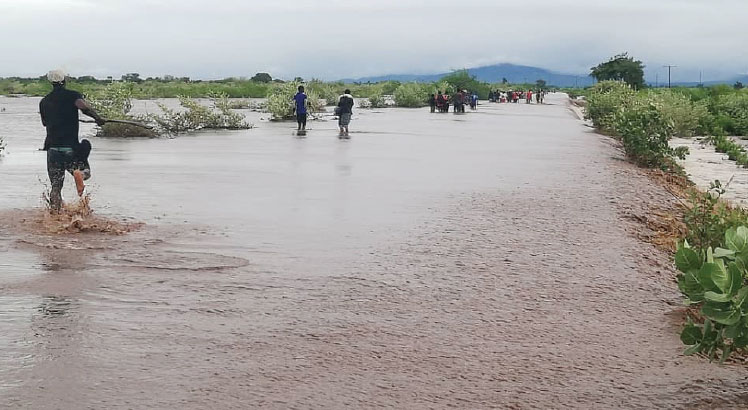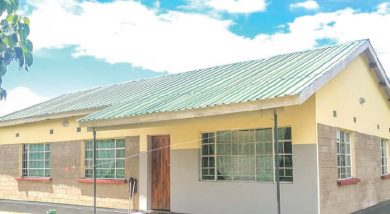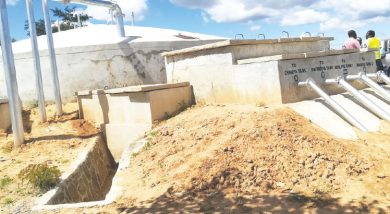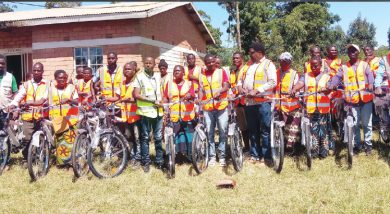Floods displace 67 in Shire Valley
Floods have displaced 67 people in Nsanje District and affected 229 households in the areas of traditional authorities (T/As) Mbenje and Mlolo, it has emerged.
Nsanje district desk officer for disaster risk management Patrick Sipuni said in the Mbenje area, stormy rains have affected 162 houses with 62 houses completely damaged while 100 others have their roofs blown off.
He said: “Flash floods from Ruo River entered people’s homes and those that have been displaced are seeking shelter at a newly constructed health post in group village head Tchereni in T/A Mlolo. Suffice to say, some have started returning home. We are working with local structures to provide necessary support to survivors.”
Sipuni said currently, the people are in need of food, clothes, temporary shelter materials and beddings.
Nsanje District director of health and social services Gilbert Chapweteka said while the district has not been reporting more cholera cases recently, the floods pose a threat of an increase in cases.

“Cholera can spread easily, especially in camps as many people are forced to live at one place. We encourage communities to be cautious, follow all hygiene measures, use safe water and we are distributing chlorine to communities to keep them safe,” he said.
To date, cholera has killed 494 people and affected 15 684 others nationwide.
In Chikwawa, council spokesperson Steve Chirombo said apart from the road damage at Bereu which has now been fixed, there has not been any report of disasters at household level.
“Water levels are getting high, anytime some areas might experience floods. Our call to the communities is that those still in low-laying areas should move upland,” he said.
Phalombe relief and rehabilitation officer Florence Harawa said they are monitoring the situation based on the flood alert issued by the Department of Climate Change and Meteorological Services (MET).
She said: “We haven’t received any reports of disasters so far. However, we are on alert, working with village disaster committees and sensitising the communities to always make sure they are safe.”
Malawi Red Cross Society communications and resource mobilisation specialist Felix Washon said the society is on the ground conducting assessments to ascertain the extent of the damage, how many people are affected and what kind of assistance they need.
He said: “We start with assessment and in collaboration with the Department of Disaster Management Affairs [Dodma], we provide the necessary intervention. However, we have intensified awareness as MET has been issuing flood warnings.
“It is unfortunate that as a country, we spend more resources in response, which can be saved if the people prevent disasters which include deaths and loss of property.”
Incessant rains in most parts of the country last week damaged infrastructure, including roads and raised fears of flooding.
In Nkhotakota District, the rains damaged the Lakeshore Road, also known as the M5, which has been cut off at Phakwe while in Chikwawa District, the M1 was reduced to a single lane at Bereu, making it difficult for motorists to pass through.
The M5 has been closed to traffic pending maintenance.
MET has been predicting flash floods, especially in flood-prone areas such as Chikwawa, Nsanje and other lakeshore areas.
Chikwawa district commissioner Ali Phiri last week said floods pose a big threat as far as the cholera outbreak is concerned.
Dodma said it arranged for the deployment of a search and rescue team comprising the Malawi Defence Force, Malawi Police Service and the Marine Department to Lower Shire districts of Nsanje and Chikwawa.
Since the onset of the 2022/2023 rainy season, Dodma has recorded 42 deaths, 28 due to lightning strikes while 14 have died due to collapsed walls following stormy rains and strong winds.
So far, 85 people have sustained various degrees of injuries. The disasters have also caused damage to churches, schools and hospitals.
Combined effects of tropical storms Gombe and Ana between January and March this year killed 85 people and affected 1 154 298 others in the Southern Region.
Thirty-nine people were killed due to the effects of Tropical Storm Gombe in March while 46 were killed during Tropical Storm Ana in January.






One Comment